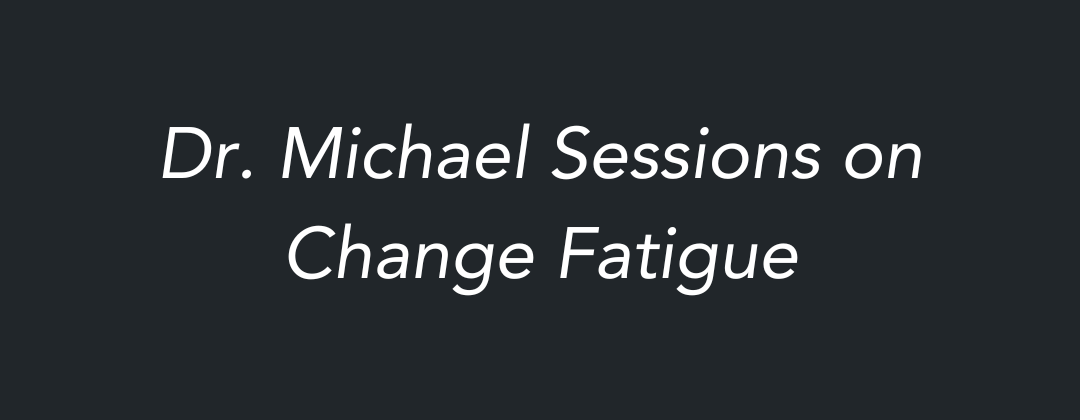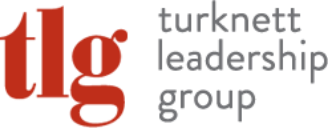

What are the primary causes of change fatigue, and are there any specific types of changes that you’ve seen that tend to be more exhaustive for employees?
The primary source I think of change fatigue somewhat stems from the way your brain wants to work. So I’m going to answer this question as if you were a client of mine and you asked me this question. It may or may not be true, but this is what I would say, that your brain is designed to look for patterns and identify routines so that it can automate decision making as much as possible. We do this because there’s far too many stimuli coming at us from the world to process them all. So we’re constantly trying to create bandwidth, or cognitive capacity. When change occurs, it disrupts our ability to anticipate what’s coming next. In other words, our routines are disrupted and we can’t automate; what we’ve automated doesn’t work. So we keep initially, regressively, trying the program again – in the same way that when something doesn’t work on your phone, we usually just do the same thing again. When all those fail we turn it off and turn it back on, and we keep waiting for the predictable outcomes to occur. In real change, they don’t. That is, we temporarily lose our ability to forecast the future, which is kind of the way our brain works in the world. So what is exhausting about change is having to consciously make decisions about the most likely next events when we don’t have adequate information to forecast from. So we have to rebuild our database, in essence, so that we have a basis for forecasting what’s likely to happen and what we should be doing at any moment in time until it becomes predictable enough that we don’t have to think about it anymore.
How would you say this manifests in your clients as an executive coach? Are there any specific patterns or behaviors that you’ve seen?
Yes. It happens at two levels with my clients. There is macro change that is reorganization or acquisition, merger, anything where there’s a fundamental disruption of how you go to work every day and what your job is. So the whole organization can change or you can get a new job. In either case, what tends to occur is that we struggle in trying to apply the old model and finding it doesn’t work and then having to relearn, which means for a period of time, we tend to be anxious or afraid we don’t know what we’re doing in a new job. I talk about situational leadership a lot with clients, which is a model that says there are four stages in employee’s integration into a new job. And in the first they’re highly motivated, but they don’t know what they’re doing. So they need a lot of direction. And in the second phase they become discouraged because they’re not learning quickly enough and so they need support and direction. In the third, they know what they’re doing, but they don’t have confidence that they know. So they just need support, not direction. And then finally not only do they know what they’re doing, they believe they know what they’re doing. You can now delegate to them freely. What happens in that cycle is that people are able to automate a good chunk of it. They know they can manage their expectations. They know what’s expected of them, and they know that they can deliver on it, and they do so with a high probability of being right. And that’s what we call competence. Now, people will drop out of an organization – out of a job – if they get stuck in that second level where not only do they not know what they’re doing, they know they don’t know what they’re doing. This is a predictable stressor in every new job. It’s also a predictable stressor when you reorg. A certain number of people will quit because the job they now have isn’t the job they had or the job they wanted, and everybody else will struggle with trying to take the new structure and translating it back into the old structure. Now this is what we call resistance. I see this in cultural change all the time, and I talk to people, I’m pretty sure Bob has too, that there is culture that has its own immune system, and it resists change. Culture is the shared awareness of how things are actually done and decisions are made and when you come and try to change culture the people who benefit most from the previous culture will actively resist the change and try to undermine it. So the fatigue that I see happens initially when people’s jobs change. The worst case is when your job is changed, not by you, but for you. Someone tells you, you don’t do this anymore, you do this. And people don’t know what they’re doing for a period of time, their anxiety goes up and their fatigue goes up until they can learn it. And their longevity in the role will be a function of how long it takes to learn it.
Do you find that if it takes longer to learn it, they will be in the role for longer or the other way around?
Shorter. Shorter. I see. The longer it takes, the more likely it is you’ll bail.
And you could say efforts at cultural change and every reorganization in part is a cultural change. Reporting relationships are different. Scope of responsibility is likely to be different. Scope of authority might be different. People have to relearn how decisions will be made, and it is hard work. And there’s a lot of ambiguity that is only solved usually by trial and error, which means a lot of mistakes are made. Smart people hate to make mistakes, it stresses them. Stress is tiring. So one of the symptoms of stress is irritability. People squabble more. There tends to be more interpersonal distress in times of change. Alliances change, support systems change. Everything is on manual control, and it’s harder. Even when you can intellectually agree on the reason for the change, it’s still stressful. So change fatigue in large part is the stress that attends an inability to comfortably and reliably predict the future.
Do you find that there are specific strategies or just ways, long-term strategies that organizations can take on to help minimize this change fatigue or to build resilience against it?
The absolute best thing that they can do is clearly state the reason for the change, the desired outcome of the change, and then repeat that endlessly until it becomes no longer a change, but the way we operate. So communicating the rationale and the desired state you’re moving toward – the outcome, the reason, the purpose for the change – is the single most important thing you could do in organizational change. In occupational change, someone gets a new job. One of the things that you do to reduce the stress of that – and I’m going to use change fatigue and stress interchangeably because I think they’re the same thing – is that you predict that you’re going to feel this way and manage expectations aggressively. “Let me tell you what I expect of you,” “this is the job.” Most times people are not adequately onboarded in the new roles. And they don’t really know what to expect. One of the things that I used to do a lot more of, but still do with some frequency, is new leader onboarding or new leader acceleration coaching. Which is to facilitate meetings between new leaders and their direct reports as to who the leader is, how they work. I used to go in and I would do a psychological introduction that is, “We’ve done assessments. Let me tell you about your boss. This is how they make decisions. This is how they work.” And then let the boss talk about what they expect and let the employees talk about how to manage them so the boss knows what to expect from them. It’s not a hundred percent effective, but it’s helpful because otherwise new organizations are distracted and lose focus. Trying to guess what their boss wants and who they are, how they operate, they speculate. So you’re trying to reduce ambiguity.
That reminds me of a section in the Manager 2 Leader presentation from Dr. Brene Brown about giving effective feedback. The idea is if you don’t tell people straight up what’s going on, they’re going to just make up stories in their head.
That’s right. If you don’t tell people why you’re doing what you’re doing or tell people what you’re doing, they will make up a story and it will be worse.
That’s just the truth. We all internally and interpersonally gossip. We want to know what people are thinking and feeling. We want to know what they’re doing and why. And if you’re not telling them, they’re still having that conversation, they’re just not having it with you. And it will influence how they behave.
What role do leaders play in either mitigating or exacerbating change fatigue? And can you share examples of effective leadership in change situations?
Quick answer is, effective leadership requires that you own the reality that you are creating stress for people. That is, to mitigate the stress, you acknowledge that you’re going to create it, and you’ve mitigated in part by sharing the purpose for that. “Let me tell you why. Lemme tell you what will happen if we don’t do this. And let me tell you therefore why we’re doing this and what we hope to accomplish through doing it. And I know this is going to create some ambiguity, some uncertainty, some anxiety. It’s also going to create opportunity and give us a longer runway to stay in business. That’s why we’re going to do this.”
Who’s done this well? I mean, seemingly I’ve seen more people do it poorly. But we did some consulting for a tech company. They were having to downsize because they were running on private equity money, and they were starting to run low on money, and they had to reduce headcount. They were not spending effectively and they had overstaffed in some areas. So they set this up, they organized a well thought through delivery to different tiers of the organization – what they were doing and how it was going to affect them. And then they brought us in to help them with focus groups, to process with key employees – what the change meant to them, what the losses were for them, process, talk through why we were doing it, what did they hear, what did they understand, what questions did they still have. We then took the questions back to their leadership, who then brought people back together in town hall and answered their questions. And people took it pretty well. They were afraid they might have further attrition, but they didn’t. It got them through what they feared would be kind of a make or break for the org.
Any last advice, last thoughts or words that you would share with people who are reading the newsletter if they’re going through change, either voluntarily or involuntarily, what advice would you give them?
To feel stressed is normal. Do not judge yourself for being stressed and as best you can, don’t blame the organization or the environment for creating the stress. Try and understand the need for it. It helps to have a supportive narrative.

